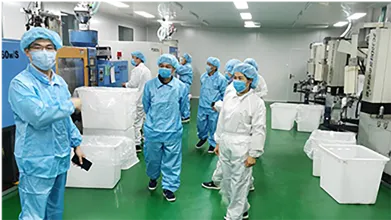lysing matrix a tubes
Lysing Matrix Tubes A Key Component in Molecular Biology
In the realm of molecular biology and biotechnology, the extraction and analysis of nucleic acids and proteins are fundamental procedures that underpin a wide array of applications, from basic research to clinical diagnostics. One of the critical components facilitating these processes is the lysing matrix tube. These innovative devices are designed to efficiently break down biological samples, thereby liberating their constituents for further analysis. This article delves into the importance of lysing matrix tubes, their composition, and their applications in various scientific fields.
Understanding Lysing Matrix Tubes
A lysing matrix tube is a specialized tube that contains a matrix, often composed of materials like silica beads, ceramic beads, or glass beads, which are designed to disrupt cellular structures. The primary purpose of these tubes is to facilitate the lysis of cells, which is the breaking open of the cell membrane to release nucleic acids (DNA and RNA) and proteins. This process is essential for subsequent steps such as purification, quantification, and analysis.
The stress exerted by the matrix components, combined with vigorous shaking or vortexing, effectively breaks down difficult-to-lyse samples, such as bacteria, fungi, and tough tissue samples. The robust design of these tubes ensures that they can withstand high-energy processes, making them a reliable choice for laboratory use.
Composition of Lysing Matrix Tubes
Lysing matrix tubes are typically assembled from high-quality materials that can endure the mechanical stress involved in the lysis process. Their construction often involves
1. Matrix Beads The choice of beads—ceramic, glass, or silica—depends on the specific application and the type of samples being analyzed. Each material has unique properties that affect its efficiency in breaking down different cellular structures.
2. Buffer Solutions Many lysing matrix tubes come pre-filled with various buffer solutions that facilitate lysis and stabilize released nucleic acids. These buffers are tailored to maintain the integrity of the biomolecules and prevent degradation during the process.
3. Sealing Mechanisms High-quality seals are crucial to prevent leakage during vigorous mixing, ensuring that all materials remain contained within the tube.
lysing matrix a tubes

The combination of these elements allows for optimal performance in sample lysis and subsequent analysis
.Applications in Scientific Research
Lysing matrix tubes have become invaluable tools in numerous scientific fields, including
- Genomics In genetic studies, the extraction of pure DNA and RNA is paramount. Lysing matrix tubes streamline this process, improving the yield and quality of nucleic acids from various biological samples.
- Proteomics Researchers require efficiently lysed samples to isolate proteins for analysis. The use of lysing matrix tubes can enhance the extraction process, allowing for more accurate proteomic profiling.
- Microbiology When working with microbial samples, such as biofilms or hardy bacteria, lysing matrix tubes provide the mechanical force necessary to release intracellular contents for further study.
- Environmental Science In the analysis of soil or water samples, lysing matrix tubes enable scientists to evaluate microbial communities and their metabolic functions, aiding in ecological assessments and pollution studies.
Conclusion
In summary, lysing matrix tubes are essential components in the toolkit of modern molecular biology. They significantly enhance the efficiency of sample preparation, ensuring that researchers can obtain high-quality nucleic acids and proteins for analysis. As technology advances, ongoing innovations in the design and composition of lysing matrix tubes are expected to further improve their efficacy and broaden their applications. Whether in academic research or clinical settings, the importance of these tools in advancing our understanding of biological systems cannot be overstated. The future of molecular analysis is bright, and lysing matrix tubes will undoubtedly play a pivotal role in it.
-
Aesthetic Makeup Spray Bottles | Fine Mist Empty RefillableNewsAug.19,2025
-
White Plastic Veterinary Vaccine Vials | Lab Liquid BottlesNewsAug.18,2025
-
Plastic Medicine Liquid Bottle: Secure Flip Top Drug VialsNewsAug.17,2025
-
Durable 250ml Blue Plastic Vaccine Vial for Lab & Vet UseNewsAug.16,2025
-
Sterile Virus Sample Tubes: Secure & Reliable Specimen CollectionNewsAug.15,2025
-
White 250ml Plastic Vaccine Vial for Lab & Vet MedicineNewsAug.14,2025
























